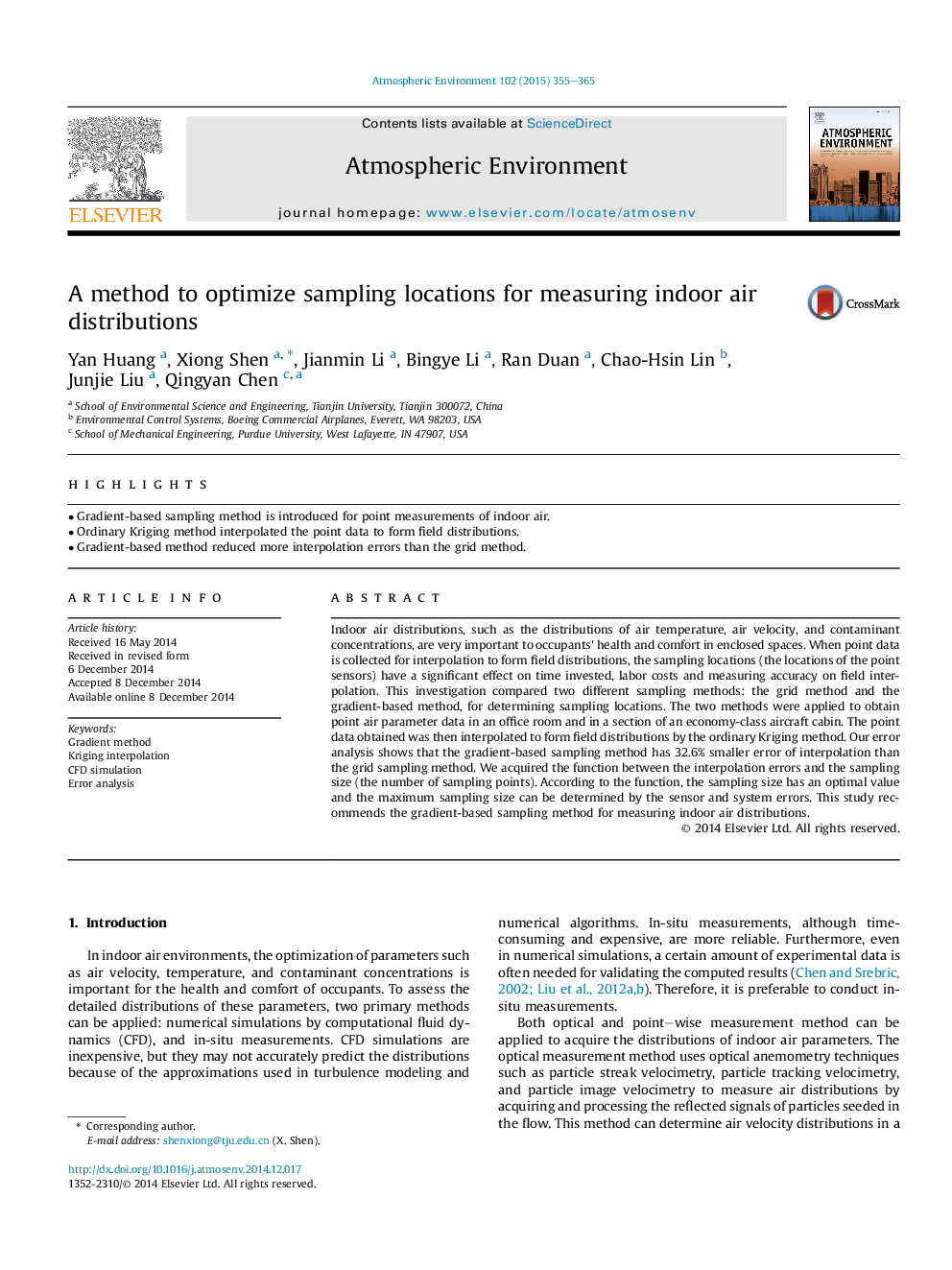| Article ID | Journal | Published Year | Pages | File Type |
|---|---|---|---|---|
| 6338884 | Atmospheric Environment | 2015 | 11 Pages |
Abstract
Indoor air distributions, such as the distributions of air temperature, air velocity, and contaminant concentrations, are very important to occupants' health and comfort in enclosed spaces. When point data is collected for interpolation to form field distributions, the sampling locations (the locations of the point sensors) have a significant effect on time invested, labor costs and measuring accuracy on field interpolation. This investigation compared two different sampling methods: the grid method and the gradient-based method, for determining sampling locations. The two methods were applied to obtain point air parameter data in an office room and in a section of an economy-class aircraft cabin. The point data obtained was then interpolated to form field distributions by the ordinary Kriging method. Our error analysis shows that the gradient-based sampling method has 32.6% smaller error of interpolation than the grid sampling method. We acquired the function between the interpolation errors and the sampling size (the number of sampling points). According to the function, the sampling size has an optimal value and the maximum sampling size can be determined by the sensor and system errors. This study recommends the gradient-based sampling method for measuring indoor air distributions.
Related Topics
Physical Sciences and Engineering
Earth and Planetary Sciences
Atmospheric Science
Authors
Yan Huang, Xiong Shen, Jianmin Li, Bingye Li, Ran Duan, Chao-Hsin Lin, Junjie Liu, Qingyan Chen,
